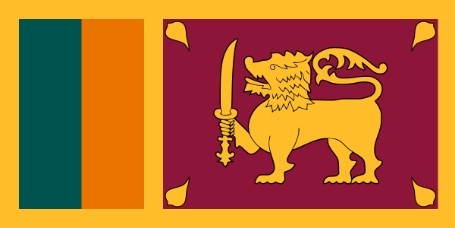National Flag
National Flag
 The National Flag of Sri Lanka represents the country and her heritage as rallying device that integrates the minorities with the majority race.
The National Flag of Sri Lanka represents the country and her heritage as rallying device that integrates the minorities with the majority race.
Sri Lanka National Flag is an improvisation of the civil standard of the last king of Sri Lanka, Sri Wickrama Rajasingha.
The civil standard had a passant royal lion with a sword in it’s right fore paw at the center, and a bo-leaf on each of the four corners on a plain border.
When Sri Lanka gained her independence from Great Britain on February 04, 1948, it was the lion flag of the last king of Sri Lanka was hoisted once again.
The first Prime Minister of independent Sri Lanka, D.S.Senanayake, appointed a committee to advice the government on the design of a new national flag. The design approved by the committee in February 1950 retained the symbol of the lion with the sword and the bo-leaves from the civil standard of the last king of Sri Lanka, with the inclusion of two vertical stripes green and orange in color.
The significance of each symbol of the national flag is as follows:
- The lion in the flag represents the Sinhala race.
- The sword of the lion represents the sovereignty of the country.
- Curly hair on the lion’s head indicates religious observance, wisdom and meditation.
- The beard denotes purity of words.
- The handle of the sword highlights the elements of water, fire, air and earth.
- The nose indicates intelligence.
- The two front paws purport to purity in handling wealth.
- The vertical stripe of orange represent the minority Tamil race and the green vertical stripe the minority Muslim race.
- The four virtues of kindness: KINDNESS, FRIENDLINESS, HAPPINESS, EQUANIMITY are also represented in the flag.
- The border round the flag, which is yellow in color, represents other minor races.
- The bo-leaves at the four corners of the flag represent Buddhism and it’s influence on the nation. They also stand for the four virtues - Kindness, Friendliness, Happiness and Equanimity.
- The maroon colored portion of the flag manifests the other minor religions.
The national flag was hoisted for the first time on March 3, 1950.

 Date: 27.12.2025 - 04:04
Date: 27.12.2025 - 04:04 Date: 27.12.2025 - 06:34
Date: 27.12.2025 - 06:34